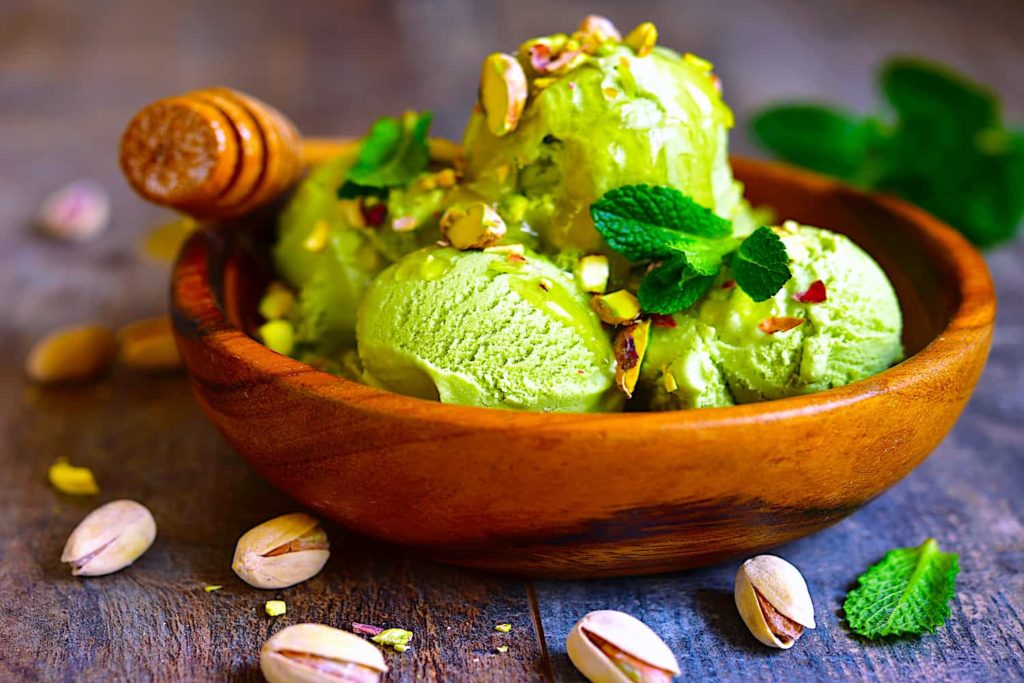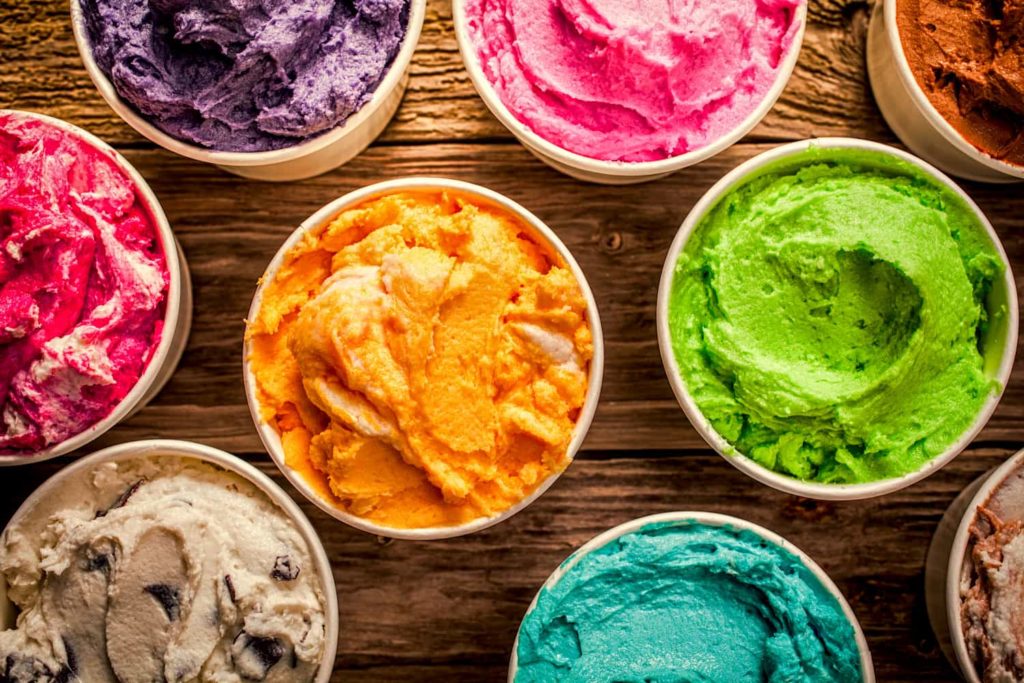
Ice Cream and the Invention of Summer, Part II
There’s so much to say about ice cream! When I first decided to write about creativity and this frosty treat, I assumed it would be one short essay to refresh my readers from the summer heat. I still hope that my writing about ice cream is refreshing, but my fascination with the topic has expanded into a three-post series on this delicious summertime dessert.
Three scopes of ice cream creativity, please!
The first post in this series explored how each stage of the history of ice cream overflows with creativity and innovation. I’m not saying that the previous post was “vanilla,” but this second one is packed with even more flavor.
The present post examines the fascinating topic of how we flavor ice cream. It’s not just about the creativity involved in past flavor innovations, but rather how we can harness our own creativity in imagining new flavors and innovative combinations.
An Early History of Icy Flavors
The first frozen confections weren’t exactly ice cream, but rather concoctions made from mountain snow and flavorings. They were more like modern snow cones, but the original flavors would still be familiar to us today: sweetened fruit juices and syrups. Fruit flavors continue to be some of the most popular options for ice cream today, from strawberry to lemon to cherry and beyond.
Many food historians hypothesize that the introduction of dairy to iced confections occurred during the Middle Ages somewhere between the Middle East and Persia. While milk, cream, and cultured dairy (such as yogurt), changed the consistency and base flavor of the frosty desserts, fruit continued to be a popular additive.

Produce such as dates and figs were widely available throughout the region during the Middle Ages, but other additions to ice cream’s predecessors became popular as well. Spices and herbs, like saffron and mint, made their way into the refreshing concoctions, as did floral essences, such as rosewater and orange blossom. Nuts, especially pistachios and almonds, added both flavor and texture to early ice creams, and nutty flavors remain popular today.
Two of today’s most popular choices, however, were relatively late additions to the list of ice cream flavors. Both chocolate and vanilla came from plants that were native to the Americas (specifically southern Mexico and Central America), but not to Europe, Asia, or Africa. Chocolate and vanilla ice creams (at least the type made with milk from cows, which were not native to the Americas), were impossible until the establishment of the often-tragic exchange between the two sides of the Atlantic.
By the late eighteenth century, the “big three” ice cream flavors –strawberry, chocolate, and vanilla– had been invented. By the end of the nineteenth century, these three (as well as other fruit flavors), became widely available as production innovations took ice cream from an elite food to one that more people could enjoy.
Innovations in Flavor
All the stages of ice cream flavor innovation must have seemed preposterous at the time, and that’s precisely why they were creative. At each stage, someone undoubtedly asked, “are you really going to mix that with sugar, milk, and ice?” The predecessors to modern strawberries, for example, were considered medicinal and not a dessert throughout Antiquity and the Middle Ages. Who wants medicinal ice cream?
Some people may also wince at the idea of beans as flavorings for sweets, even though “dessert beans” like adzuki and mung beans are common flavorings in Asian-inspired ice creams. But when we really think of it, chocolate and vanilla are both beans. Today’s most popular ice cream flavors (strawberry, chocolate, and vanilla) must have all seemed like strange ideas when they first occurred in someone’s imagination.

The definition of a creative act is making a new combination that has a productive outcome. Anytime someone brings a new flavoring together with an ice cream base, and that combination is “productive” (also known as satisfying, surprising, delicious, or even lucrative), then we have an example of creativity.
How many more imaginative ways of flavoring ice cream can be created? The possibilities are practically infinite.
Creative Combinations
Up until this point, we have discussed single-flavor ice creams, but some of the most beloved ice cream flavors of the past century have been flavor combinations. Two-ingredient combinations that have become classics include maple nut and rum raisin. A few complex concoctions have even garnered their own creative names, such as Rocky Road, which is chocolate ice cream with nuts and marshmallows.
There are even combinations whose components are a secret, but beloved, nonetheless. Such is the case with the Midwestern flavor known as Blue Moon. The color is a bright aquamarine, but the ingredients are a jealously guarded secret. Some hypothesize that it’s Tutti Frutti with an additional essence. Is it almond extract, or wintergreen, or even cardamom? In this instance, mystery is an integral part of the imaginative experience.

The combinations discussed until this point have been flavors in which the goal is for each spoonful to contain all the components. In other words, the ingredients are distributed more-or-less evenly throughout. Other ice cream preparations keep the flavors partially separate. Perhaps the most famous of these is Neapolitan, which arranges three separate flavors of ice cream into layers or sections. The most common combination today is chocolate, vanilla, and strawberry, although there have been other arrangements. Some versions are called spumoni and are made from gelato (a relative of ice cream). There is some evidence that early flavor combinations of this dessert were green pistachio, white vanilla, and red cherry to mimic the colors of the Italian flag.
The possible flavors of ice cream expand exponentially when we consider the possibility of combinations. What ingredients can you imagine combining into a creative ice cream concoction?
Individual Experimentation
Not all of us will use our creativity to become commercial ice cream entrepreneurs. We might not even experiment with making our own ice cream flavors in our home kitchens. We may just exercise our creativity by choosing unusual flavors (or flavor combinations) the next time the summer heat propels us down the street for a frozen dessert.
Maybe our creativity will express, instead, in ways of delivering, presenting, or serving ice cream, but those topics will have to wait until our next installment: Ice Cream and the Invention of Summer, Part III.